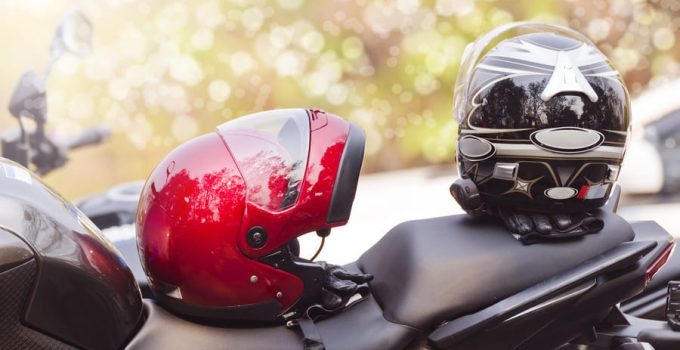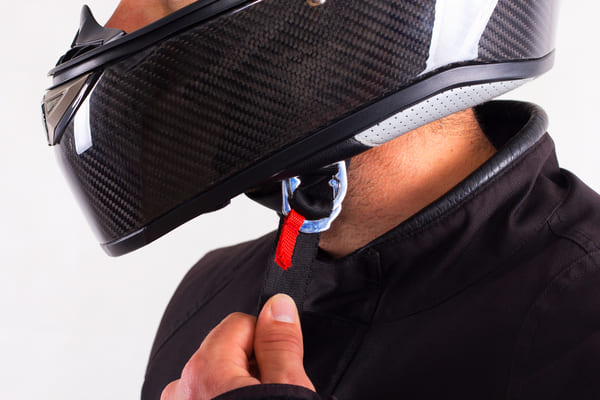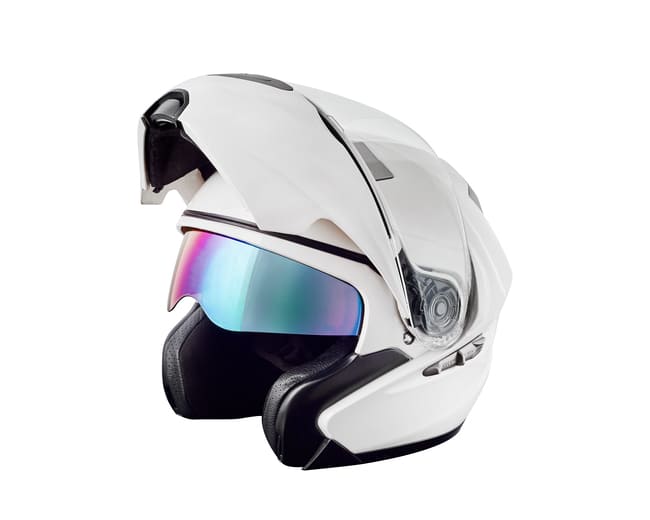
Sooner or later every prospective motorcyclist has to think about the right motorcycle helmet. In addition to questions of aesthetics, the safety factor is at the forefront: one of the safety-relevant aspects is certainly the size of the motorcycle helmet. The best quality motorcycle helmet is useless if it slips, is too small and generally doesn't fit properly. The most important part of our body, the head, should be adequately protected. Because as nice as this hobby is, motorcycling is probably one of the more dangerous leisure activities. In extreme cases, head protection can save lives. In order for this protection to be provided, the motorcycle helmet size must be reliably determined. Before you go to the nearest specialist shop or order the helmet online, it is worth measuring the head circumference for the helmet at home. In the following you will find out what you need to look out for when buying a helmet and how the motorcycle helmet ultimately has to fit.
Contents
determine head size
The first step should be to determine the head size. How to measure head circumference? Very easily! A tape measure can be used to measure the circumference at the widest part of the head. If you are unsure, you can of course get advice on this from your local specialist shop. The option could be particularly useful if you are between two sizes and are not sure whether the larger or smaller size is the right helmet size. For example, if the head is particularly narrow, the helmet may need to be fitted with an additional inner lining. Therefore, it is generally advisable to choose the larger size and have the motorcycle helmet individually adjusted. But how should a motorcycle helmet actually fit? Is there anything else to consider?
The right fit

Absolutely. Once you have found the right helmet that also suits your own taste, you should put it on and try it out. First of all, it should be checked whether it is sitting straight and not slipping too far into the neck area. If this is the case, a smaller head protection must be selected. On the other hand, the helmet should not be too tight so that it produces pressure points. A simple test can be helpful here: If the helmet can be moved back and forth easily, it does not offer sufficient safety for traffic. If, on the other hand, forehead wrinkles form, it can be assumed that the motorcycle helmet is the right size. Different manufacturers also produce different fits. It is therefore advisable to try on different models in order to acquire the ideal size. To avoid headaches when driving, the last step is to check whether there is room for the little finger in the forehead area between the head and the padding. A red stripe on the forehead after wearing it for a long time is also a sign that the helmet is too tight. In this case, the products of another manufacturer should be tried again. The helmet size can also be easily determined for people who wear glasses. Simply proceed as described above and then try on the helmet with the glasses on. If the glasses are tight and leave pressure points, the right model has not yet been found.
What else must be considered when buying head protection?
Another point that should not be neglected is the padding. Can she be taken out? This can be an advantage for those who often ride their motorcycles and want to remove the upholstery for washing. Ultimately, however, the ideal helmet size can only be determined by personal feeling. Therefore, the helmet should be put on and worn for at least 15 minutes at the end, despite all the criteria being met. How does the head feel after wearing it? Are there pressure points or do your ears hurt? If everything is correct afterwards, the choice can almost be made.
If you like getting on your motorbike in the hot summer months and want to ride towards the sunset, you should try to get an integrated sun visor.

It is also important that the helmet complies with ECE standard 22/05 to ensure that it really protects in the event of a potential fall. The safety standard guarantees the protective effect of the helmet in terms of the size of the field of vision, the resilience of the chin strap and shock absorption. Although there are certainly protective helmets on the market that offer protection without this award, laypeople should be careful here. A used helmet should also be discouraged at this point, as a single fall can affect the resistance of the product without this being visible from the outside. The safest thing to do is to spend a few more euros and get a new motorcycle helmet. Anyone who has owned head protection for a number of years should exchange it for a new model as soon as possible, because environmental influences can affect the material and make it brittle.
Which model is the right one?
Now you might think that the search is over and the right head protection has finally been found. But there are still a few things that still need to be considered, because not all helmets are the same. You have to make a decision at the latest when you are faced with the choice of full-face helmets, jet helmets, flip-up helmets or cross helmets. The choice here depends entirely on how intensively the motorcycle is used and which routes are to be covered most frequently. A full-face helmet, for example, will benefit more sporty drivers, as it offers solid noise protection and generally has the most stable construction. A jet helmet, on the other hand, will be interesting for those who participate in traffic in the city and do not want to take up too high speeds. It is characterized by its half-shell shape and also offers less security than the former due to the lack of a chin guard. The flip-up helmet is an intermediate form of the above helmet types and combines their advantages, because it offers enough protection as well as the possibility to feel the fresh air on your face while driving. In conclusion, it can be stated that the purchase of a head protection is of great importance, both for your own safety and that of the passengers.
